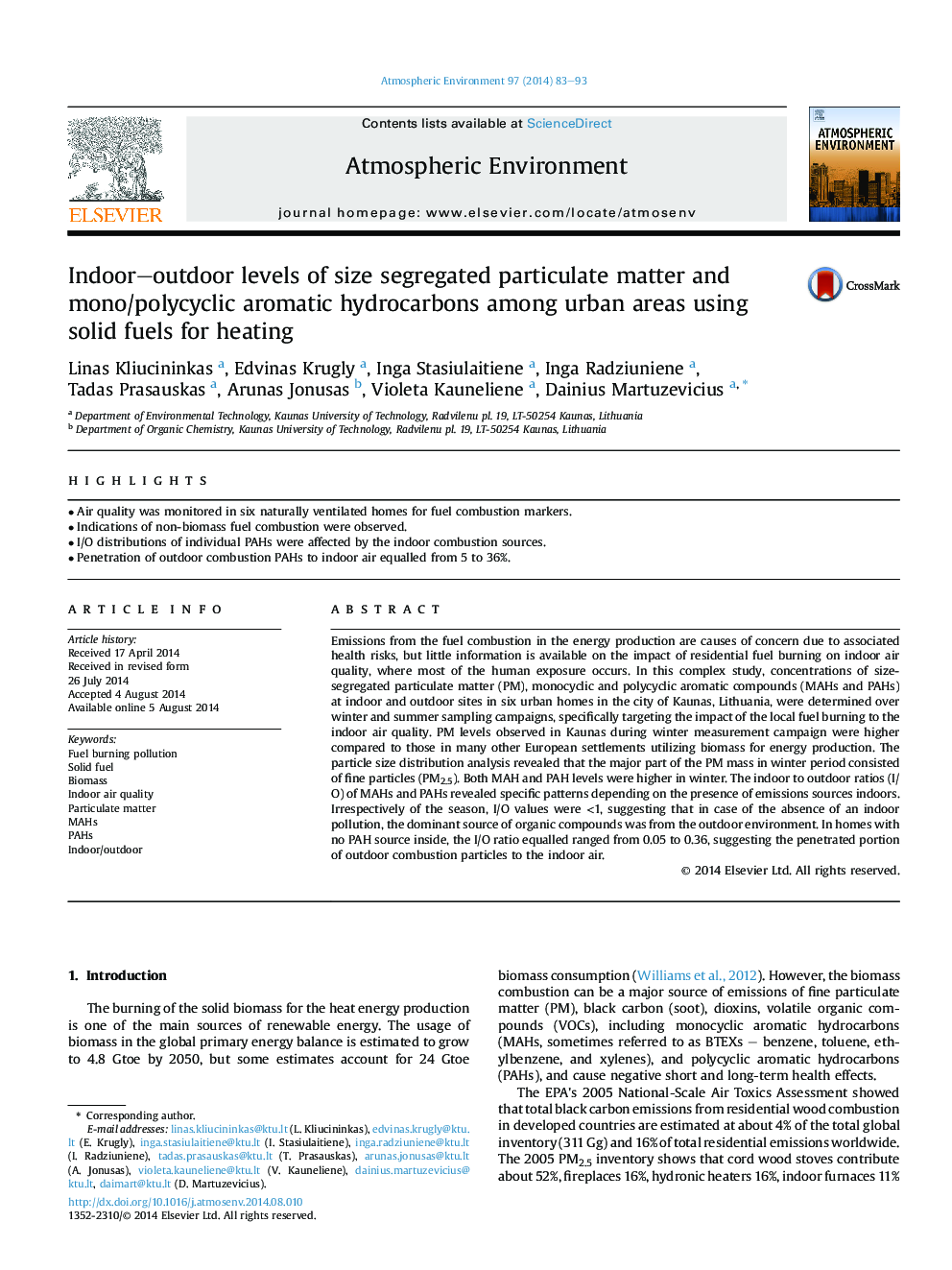| کد مقاله | کد نشریه | سال انتشار | مقاله انگلیسی | نسخه تمام متن |
|---|---|---|---|---|
| 6339757 | 1620374 | 2014 | 11 صفحه PDF | دانلود رایگان |
- Air quality was monitored in six naturally ventilated homes for fuel combustion markers.
- Indications of non-biomass fuel combustion were observed.
- I/O distributions of individual PAHs were affected by the indoor combustion sources.
- Penetration of outdoor combustion PAHs to indoor air equalled from 5 to 36%.
Emissions from the fuel combustion in the energy production are causes of concern due to associated health risks, but little information is available on the impact of residential fuel burning on indoor air quality, where most of the human exposure occurs. In this complex study, concentrations of size-segregated particulate matter (PM), monocyclic and polycyclic aromatic compounds (MAHs and PAHs) at indoor and outdoor sites in six urban homes in the city of Kaunas, Lithuania, were determined over winter and summer sampling campaigns, specifically targeting the impact of the local fuel burning to the indoor air quality. PM levels observed in Kaunas during winter measurement campaign were higher compared to those in many other European settlements utilizing biomass for energy production. The particle size distribution analysis revealed that the major part of the PM mass in winter period consisted of fine particles (PM2.5). Both MAH and PAH levels were higher in winter. The indoor to outdoor ratios (I/O) of MAHs and PAHs revealed specific patterns depending on the presence of emissions sources indoors. Irrespectively of the season, I/O values were <1, suggesting that in case of the absence of an indoor pollution, the dominant source of organic compounds was from the outdoor environment. In homes with no PAH source inside, the I/O ratio equalled ranged from 0.05 to 0.36, suggesting the penetrated portion of outdoor combustion particles to the indoor air.
Journal: Atmospheric Environment - Volume 97, November 2014, Pages 83-93
